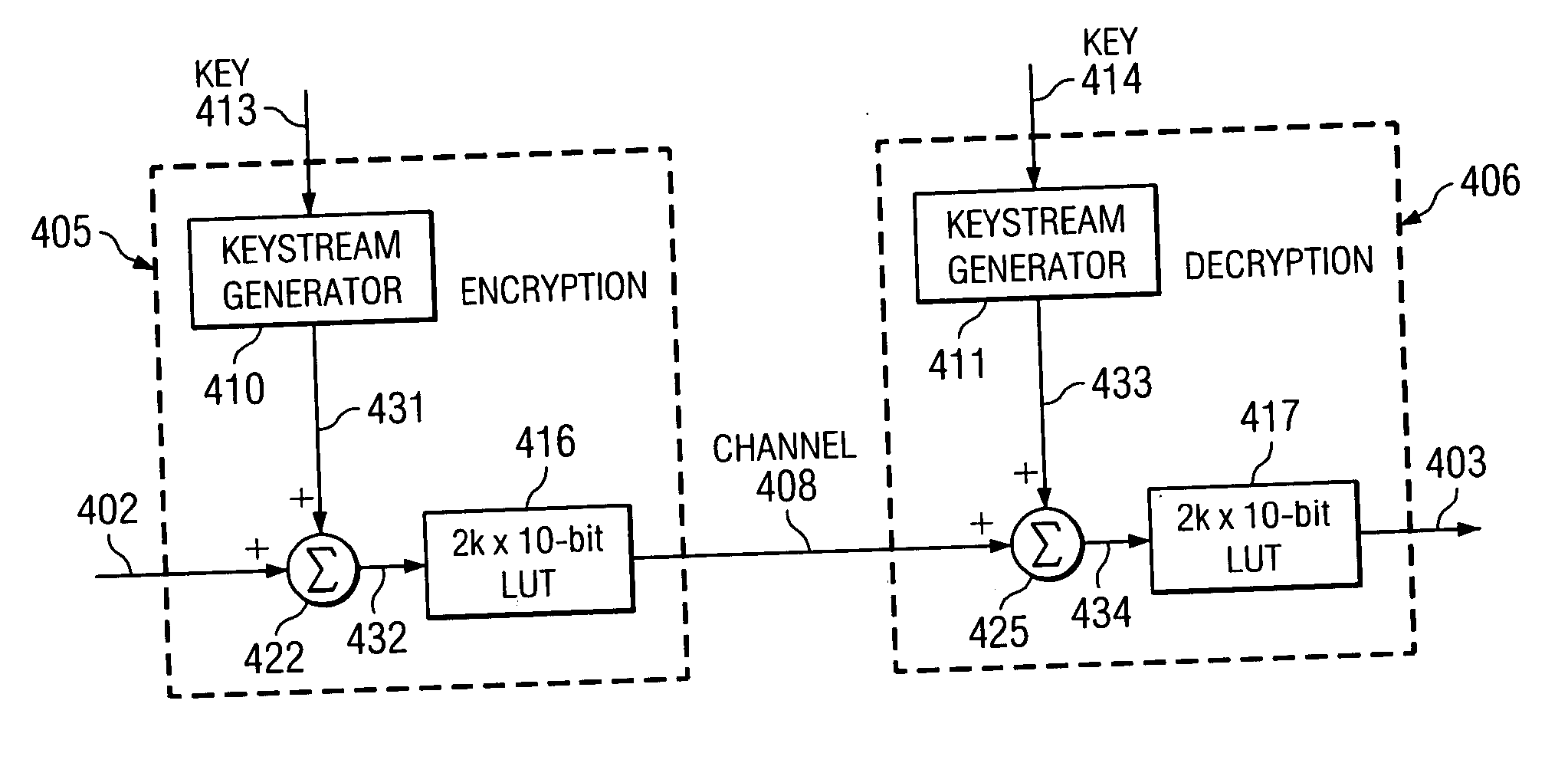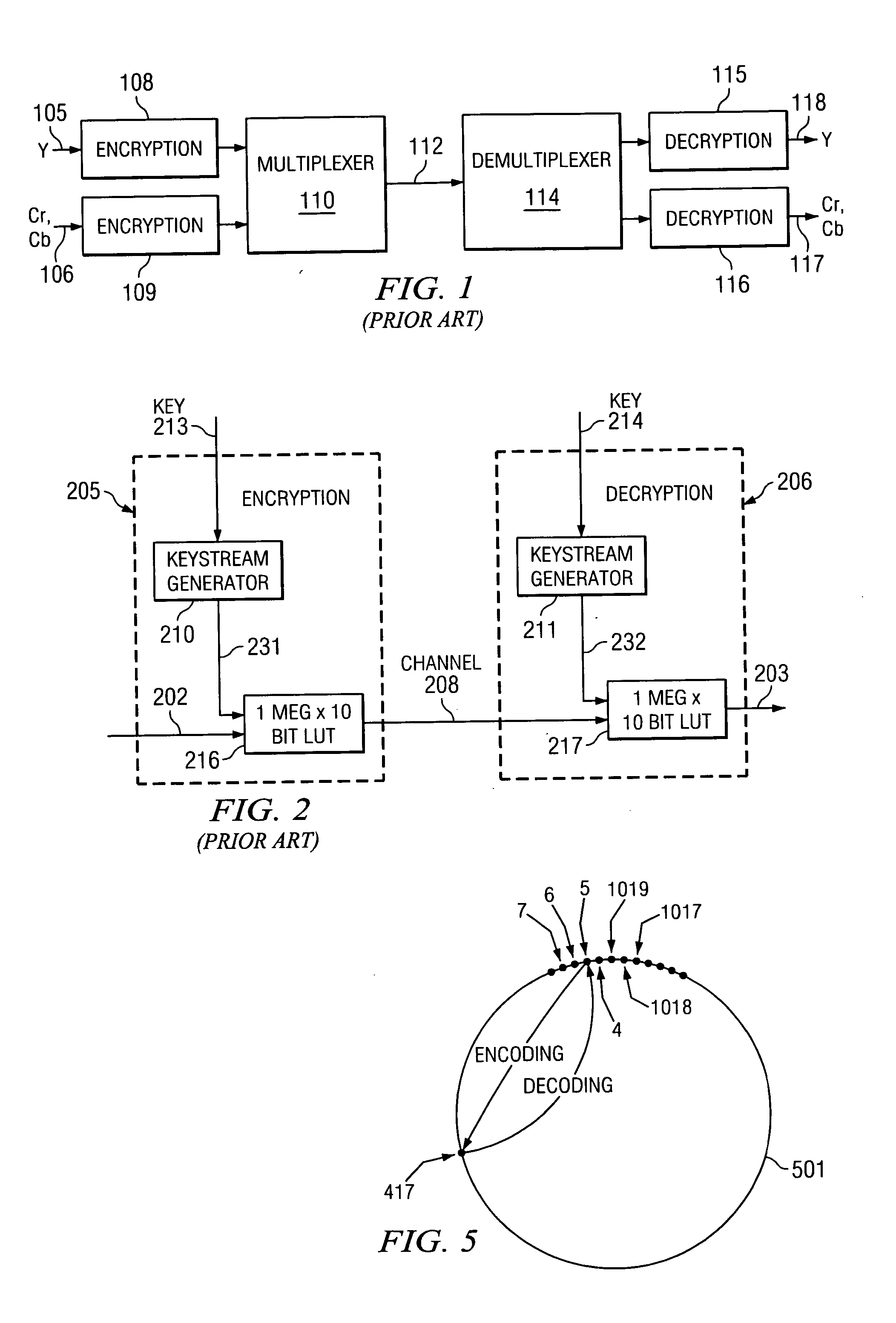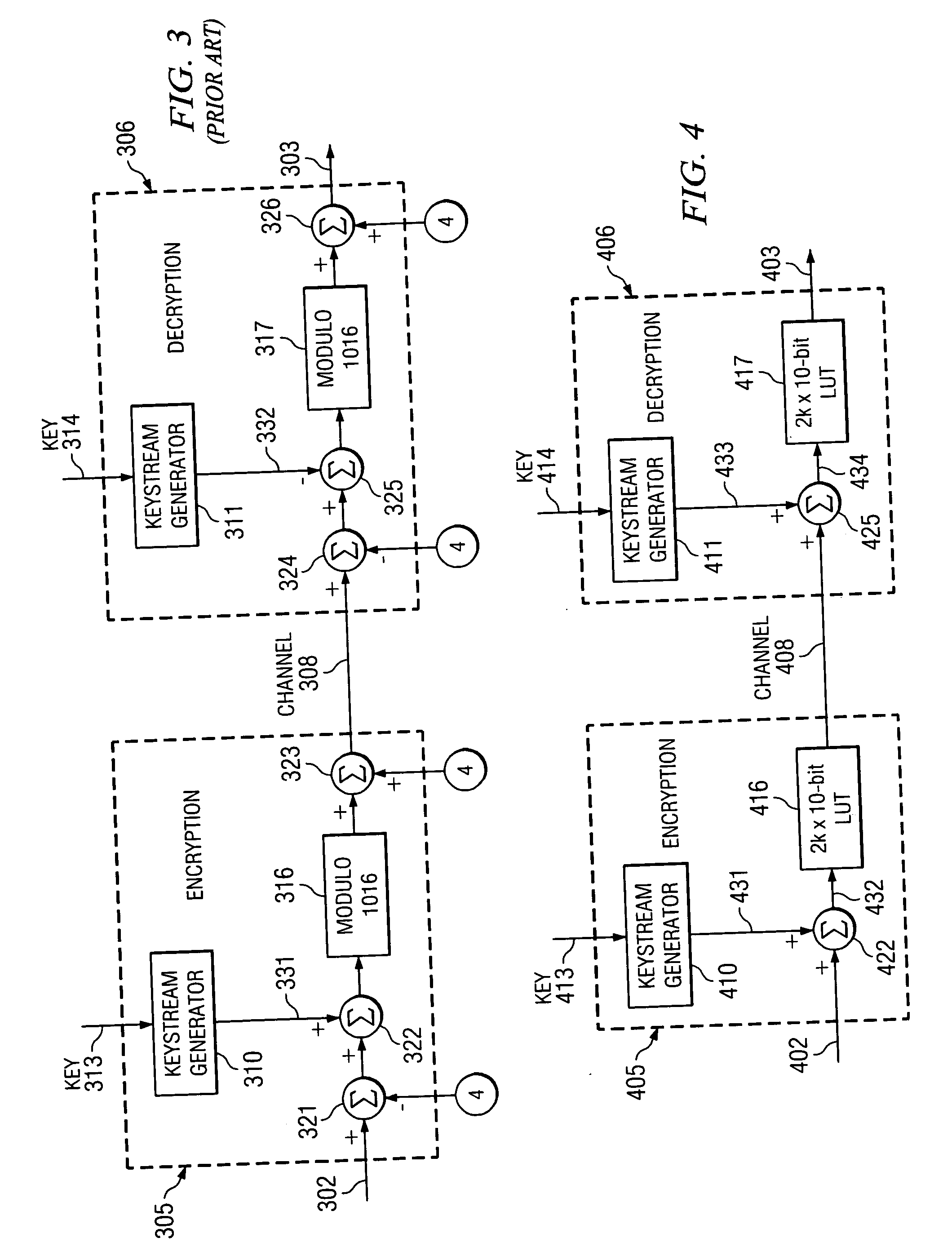Method and apparatus for synchronous stream cipher encryption with reserved codes
a cipher encryption and reserved code technology, applied in the field of digital encryption devices, can solve the problems of inability to generate or operate on restricted codes in modulators/demodulators in such systems, inability to achieve the effect of generating or implementing restricted codes, and long repetition length of encoding period to render encryption substantially unbreakabl
- Summary
- Abstract
- Description
- Claims
- Application Information
AI Technical Summary
Benefits of technology
Problems solved by technology
Method used
Image
Examples
Embodiment Construction
[0027] The making and using of presently preferred embodiments are discussed in detail below. It should be appreciated, however, that the invention provides many applicable inventive concepts that can be embodied in a wide variety of specific contexts. The specific embodiments discussed are merely illustrative of specific ways to make and use the invention, and do not limit the scope of the invention.
[0028] Embodiments of the invention will be described with respect to preferred embodiments in a specific context, namely an apparatus and method for encoding a digital data stream containing reserved data codes in both the unencoded and encoded data streams. Embodiments comprise processes that can be symmetric and complementary to perform signal encryption and decryption.
[0029]FIG. 4 illustrates an exemplary embodiment of an encryption and decryption process and method of the present invention that can perform encryption and decryption excluding restricted codes such as the eight res...
PUM
 Login to View More
Login to View More Abstract
Description
Claims
Application Information
 Login to View More
Login to View More - R&D
- Intellectual Property
- Life Sciences
- Materials
- Tech Scout
- Unparalleled Data Quality
- Higher Quality Content
- 60% Fewer Hallucinations
Browse by: Latest US Patents, China's latest patents, Technical Efficacy Thesaurus, Application Domain, Technology Topic, Popular Technical Reports.
© 2025 PatSnap. All rights reserved.Legal|Privacy policy|Modern Slavery Act Transparency Statement|Sitemap|About US| Contact US: help@patsnap.com



